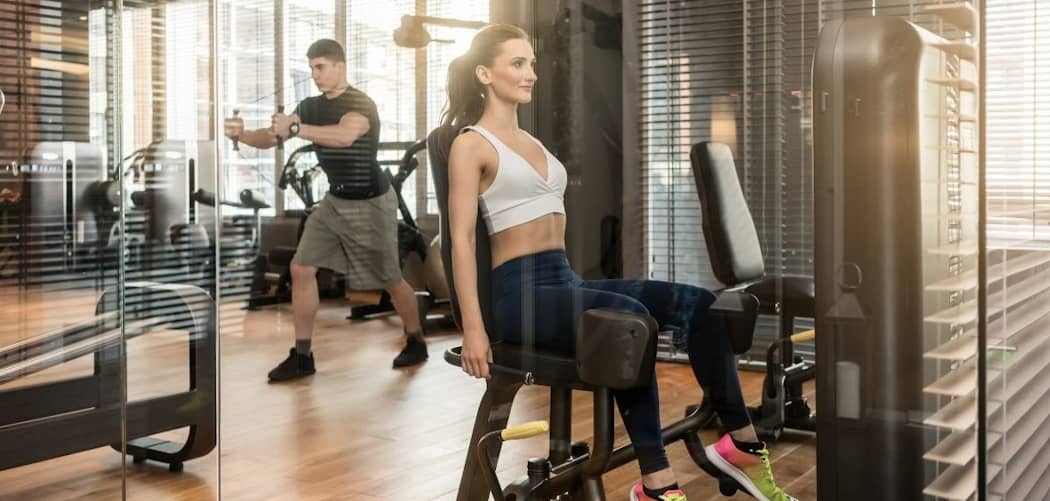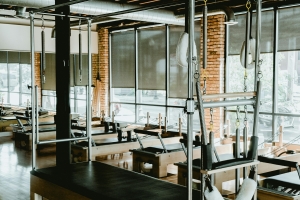Hip Abductors Vs Adductors - Benefits & Differences

So your first thoughts are that we're writing about Hip Abduction Machines vs Hip Adduction Machines? Wrong. They are included, but this article is about the muscle groups that are the abductors and adductors - as you don't just need machines to workout these vital muscle groups.
As well as talking about the benefits and differences of the Hip Abduction Vs Adduction machine, we can explain why they are important, why you need to incorporate them in your workouts and how you can perform exercises without the need for any machines.
The importance of the abductors and adductors is that by strengthening your muscles in and around your hips, you can help to improve your balance, mobility, and agility and decrease your risk of injury. Of course, you can also perform exercises without machines (see below), but the hip abduction machine (outer thigh) or the hip adductor machine (inner thigh) offer an easy way to isolate the right muscles safely.
So first, we'll explain what and why they are so important.
Are Abductors & Adductors Important?
Put simply, your adductors are a muscle group located on your inner thighs. The adductors help move your legs towards the centre of your body (imagine a vertical line right down the middle of the front of your body - your "midline"). The main function of the adductors is to provide stability during everyday activities, as well as help support movements like jumping or running (explosive and repetitive actions).
On the other hand, hip abduction muscles are located on your outer thighs and are there to help move the leg away from your body midline. Their primary function is to help with simple everyday actions like getting out of bed, stepping out of a car, or just stepping to one side.
So whether it's daily movement or professional sports performance, the abductors and adductors are crucial muscles to strengthen and train - alongside the other leg muscles.
The Key Difference Between Abduction and Adduction
As you will probably realise, the difference is down to the direction of movement in which muscles are being engaged. Remember that muscles in your body can only contract and relax, but they counteract other muscles depending on where they are on your body. So when you are performing abduction exercises on either a machine or without, you will be working muscles on the outside of your thighs that pull the leg outwards from your body, "midline".
Accordingly, the adduction muscles work on the inside of the thighs to pull your legs back together by contracting, making your leg move towards your body midline. They counteract the abduction muscles.
Clarifying Abductors & Adductors
The abductors are actually a group of muscles, not just one specific one. The hip abductor muscle group includes the glute minimus, glute medius and your TFL (or tensor fasciae latae).
Likewise, the hip adductor muscle group relates to the muscles - adductor brevis, adductor longus, adductor magnus, obturator externus and gracilis.
Key Reasons To Work Your Abductors and Adductors
There are a number of reasons why these exercises are so important, whether you're a track superstar, pro footballer or just a regular Joe. By incorporating the abductor and adductor exercises into your workout, you can start to achieve a more balanced strength in your hip and thigh muscles, and this will support other exercises and daily activities.
Preventing Injury
Obviously, warming up, stretching properly and working out any muscles will help to build strength and prevent injury. But the abductors and adductors are often forgotten in even the most advanced users' workouts.
Building strength through targeting workouts and isolating the muscles is crucial. However, abductor and particularly adductor strains or injuries can often be prevented by making use of specific strength programs as well as sports-specific training. Scientific studies have shown that making sure the adductors have at least 80% of the strength of the abductor muscles will help to prevent injuries.
Building Muscle Strength
As a compound exercise (working multiple muscles consecutively), the abductors and adductors are actually referred to as "supporting muscles" because they play a key role in ensuring the movement of other muscles. Building strength in the abductors and adductors is actually essential to help with other exercises like squats or lunges when you need to keep the proper form to prevent injury.
Muscle balance is about building muscles and their surrounding muscle groups at the same time - to prevent an imbalance that may lead to more complex injury. Compound exercises especially require a focus on activating and strengthening all the muscles engaged in the exercise.
Improving Balance & Posture
In short, you need to train the abductors and adductors muscle groups. Doing so will help not only the rest of your workouts, but it will definitely improve your stability, balance and posture. Either choose abduction or adduction machines, or use your bodyweight to achieve the workouts. This is particularly important for senior people (and we're talking over 50 here!) who tend to start suffering from weak and unstable leg muscles.
Strengthening the adductor and abductor muscles will also help your posture. It does this by helping to stabilise and then support your pelvis and hips. Incorporating specific machine, bodyweight or standing exercises to strengthen the muscles will help reduce any lower back pain from improved overall posture and can also help to prevent falls and injuries such as a broken pelvis or hip.
Explosive Movements & Speed
Want to sprint faster, be more agile when you side step or just be more explosive in general with your sport? You're not alone, and the abductors and adductors are crucial in this respect.
Stronger abductor and adductor muscles are very beneficial for cardiovascular activities where the thighs and hips help to provide your explosive power (think sprinting, running up stairs and up hills or jumping).
5 Simple Adductor Exercises - No Machines
These 5 adductor exercises provide an excellent introduction to training the muscles of your inner thighs. Always start slowly and work on your form before you go mad!
Wide Stance Squat
AKA the Sumo Squat - the wide stance squat uses your bodyweight perfectly - just start slow and go down to 45 degrees on your thighs and build up to 90 degrees. Particularly good at hitting the muscles of the inner thighs.
Standing Adduction with Resistance Band
When isolating the adductors, using resistance bands is great to really train them properly, and you can increase the resistance to suit. You will often see footballers doing this during a warm-up on the pitch.
Seated Adduction with Resistance Band
You can also do a seated version of the standing adduction exercise. This is slightly easier purely because it means you have more stability and are not standing up.
Side Lying Adduction
A great beginner exercise, as you need no equipment, as it uses bodyweight. Lie on your side on the ground; your bottom leg (depending on which side you lie) will be the one you lift to work the adductors.
Lateral Lunges
Perfect for anyone and everyone, from CrossFitters to beginners. Easy to master with bodyweight and no equipment, you can then add dumbbells if you want to increase the challenge and difficulty.
5 Simple Abductor Exercises - No Machines
All of these can be performed as a beginner without a resistance band, then introduce the appropriate colour/resistance based on strength and ability.
The Clamshell
Targeting your gluteus medius, simply lie on your side on the ground and ensure your hips are aligned vertically when you start. Beginner level - the bad then provides more resistance.
Fire Hydrant
Once in all fours, ensure you are well balanced and stable, then lift that leg up to the side - keeping it bent. Perfect for beginners with just bodyweight.
Standing Lateral Leg Raise
Lifting your leg straight out to the side will activate your abductors. So stand up straight and keep your pelvis back - keep soft knees though to help with balance. Add in the band to increase resistance when you're ready.
Side Leg Raise
Similar to a standing lateral leg raise, except you lie on your side on the floor. When you do the exercise, point your toes down to the ground - this rotates the top of the hip.
Lateral Walk
This is the footballers' favourite!? This really warms up those abductors every time you step your leg out to the side. Keep your bottom back and bend your knees slightly - this helps to target your glutes.





